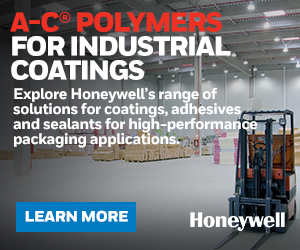
Within the packaging industry, the enduring hurdles of ensuring resistance to oil, grease, and water are well-established. Nevertheless, the growing need for environmentally responsible solutions, combined with heightened health concerns, has elevated the significance of these challenges. The domain of paper-based packaging is currently experiencing a rapid transformation as it strives to address these issues and discover sustainable alternatives.
The essence of hydrophobic and greaseproof paper
Hydrophilic and greaseproof paper plays a pivotal role across multiple sectors, including food, industry, and medicine. This type of paper is primarily crafted from plant fibers, rendering it naturally hydrophilic due to its cellulose composition, which, in turn, makes it prone to oil and grease absorption. Furthermore, its porous surface amplifies its susceptibility to oil and grease infiltration.
To address this, a common method involves coating the paper with a dense polymer film or oil-resistant agent, achieving the desired resistance to grease. However, using polymers like polyethylene, polypropylene, and polyvinyl chloride in this process poses environmental challenges due to their non-biodegradable nature, threatening the ecosystem.
Environmental implications and health concerns
The convenience of packaging materials like paper and paperboard is counteracted by their inherently low barrier properties. Historically, they have been coated with waxes, plastics, or laminated to plastic films, granting them barriers to various elements. Commonly, food containers are created from paperboard combined with a layer of wax or polymers like polyethylene (PE), polypropylene (PP), or polyethylene terephthalate (PET).
The use of fluorocarbons, mainly polyfluoroalkyl substances (PFASs), in nonstick, stain-resistant, and waterproof food packaging is due to their superior hydrophobic and lipophobic properties. Nevertheless, the downside of these substances must not be overlooked. Linked to health issues such as kidney problems, cancer, and thyroid-related ailments, PFASs have the potential to migrate into food. The recent prohibition of specific long-chain PFASs by the USFDA has escalated the demand for the packaging industry to seek safer alternatives.
In a 2022 study, Consumer Reports found significant PFAS presence in US food contact items. Out of 118 tested products, many displayed elevated organic fluorine levels, including specific PFAS compounds, with some unidentified PFAS detected, urging government intervention. Regulatory approaches to PFAS vary globally – the US has state-specific disclosures and an EPA contamination strategy, the EU employs REACH legislation and related directives, while India lacks PFAS regulations despite evidence of contamination. Companies worldwide are now seeking safer PFAS alternatives, with particular attention to regulations like California’s 2023 PFAS ban on paper food packaging and Denmark’s existing prohibition.
Unveiling strength – barrier property analysis
Assessing the grease resistance of packaging material is crucial due to the potential structural weakening caused by grease or oil permeation. To ensure these wraps meet the required standards, rigorous testing is paramount. Several tests have been designed to evaluate their resilience:
ASTM D722 and Tappi T454: These standardized tests measure the grease resistance of treated or designed papers, determining their ability to resist oils or greases commonly found in food.
Cobb 1800 Test: This evaluates the water absorptiveness of the sample. By measuring the weight difference before and after the test, it offers insights into how resistant a material is to water.
Kit Test (Tappi T559): Initially developed for papermakers, this test measures the level of grease resistance for applied coating treatments. The test uses a range of solutions varying in surface tension and viscosity. The solution’s aggressiveness dictates its number, with higher numbers indicating more aggressive solutions.
Grease Permeability Test: A crucial metric for assessing the resistance of paper to grease permeation, it uses a disk of grease applied to the paper’s surface under a defined weight. The show-through time gives a clear indication of the material’s resistance.
Given the environmental implications of traditional methods, coating has emerged as the leading method to enhance a paper wrap’s water and oil-resistant properties.
The pursuit of sustainable solutions
Amidst this backdrop, there’s a strong drift towards biodegradable, renewable, and recyclable fiber-based packaging materials. They serve as promising contenders to replace nonbiodegradable, fossil-derived single-use plastics. Yet, the limitations, mainly their vulnerability to water/moisture and high permeability, restrict their widespread application.
Specialized paper products for packaging, like pet food liners, offer multiple functionalities, from grease resistance and printability to metalizing properties. For a coating to add genuine value, it should possess low water permeability, good barrier properties, flexibility, resistance to greases, and more, all while being cost-effective.
The path ahead
Lamination and coating remain the chief commercial strategies for bestowing water and oil repellence to paper products. While low-density polyethylene (LDPE) liners are typically employed in lamination, their bond with paper fibers poses recycling challenges. In contrast, coating has emerged as the favored method to enhance paper’s water and oil-resistant properties. However, perfluoroalkyl compounds, despite their efficiency, have been linked to environmental and health issues.
The journey towards a sustainable, safe, and efficient barrier coating for paper packaging is ongoing. While strides have been made, the industry remains at the cusp of pivotal breakthroughs that will redefine the future of packaging.
Amid the increasing demands for environmentally responsible solutions in the packaging sector, Yansefu’s barrier coatings stand out as a beacon of innovation and sustainability. As the paper packaging world seeks alternatives to traditional and less sustainable methods, Yansefu’s state-of-the-art coatings offer unparalleled grease, oil, and water resistance. They successfully balance the intrinsic hydrophilic nature of paper with the essential barrier properties needed for diverse applications – from food to industrial. Going beyond mere protection, Yansefu’s coatings are meticulously crafted with environmental considerations in mind, offering brands an opportunity to align with the global shift towards eco-conscious choices.









